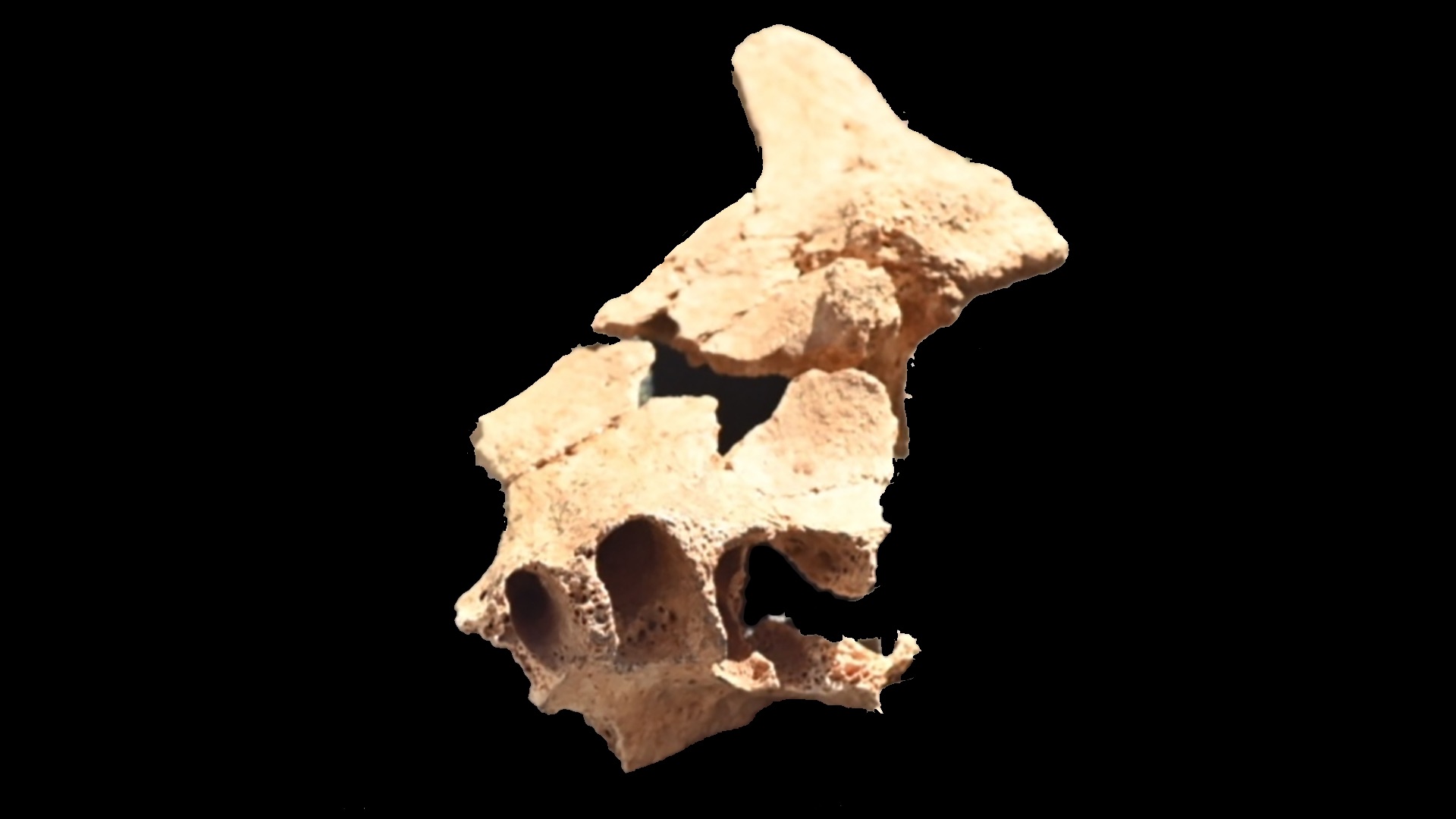 ossibly the oldest archaic human fossil found in Europe was discovered on 30 June 2022 in the Atapuerca Mountains in northern Spain. The find is thought to be related to a 1.2 million-year-old jawbone fragment found in 2007 just a few meters away at the same site, which has not yet been classified. It is definitely older than the remains of the Homo antecessor, the Pioneer Man, which was also found in a nearby cave in Atapuerca in 1997 and is believed to be 850 000 years old.
ossibly the oldest archaic human fossil found in Europe was discovered on 30 June 2022 in the Atapuerca Mountains in northern Spain. The find is thought to be related to a 1.2 million-year-old jawbone fragment found in 2007 just a few meters away at the same site, which has not yet been classified. It is definitely older than the remains of the Homo antecessor, the Pioneer Man, which was also found in a nearby cave in Atapuerca in 1997 and is believed to be 850 000 years old.
Experts now think that the newly found facial bone, along with previously found jaw bones, represents the face of the first Europeans, who probably came from Africa 1.4 million years ago and settled in Europe when the Earth looked very different. This is a groundbreaking discovery, as the first human species was thought to have appeared in Europe only 45,000 years ago. The discovery of two 1.4 million-year-old facial bones at the same site means that there are a million more years of evolution in Europe that we know nothing about.
Juan Luis Arsuaga, paleontologist and one of the three co-directors of the prehistoric site of Atapuerca, said that these fossils “could force us to rewrite the books on human evolution” because they “push back the human presence in Europe and show us that things we thought appeared at the end of evolution (like the modern face) came into being at the beginning.”
He also stated that the finding of the facial bones was “a scientific miracle,” as usually only parts of the skull are found, but not the faces of ancient hominids.
When did modern humans first evolve?
There is no clear answer to this question, and scientists are still investigating and linking the existing contradictory information. According to fossils and DNA, modern Homo sapiens evolved in Africa about 300 000 years ago, while the ancestors of today’s human populations outside Africa left the continent only about 60 000 years ago and arrived in Europe about 45 000 years ago, where they quickly replaced the long-established population of Neanderthals, which died out about 40 000 years ago.
However, archaeological findings – tools, artifacts, cave paintings – prove that modern humans, who use complex technologies and build diverse cultures, or in other words, behavioral modernity, developed only more recently: 50 000 to 65 000 years ago. Because 200,000 to 300,000 years after the first appearance of Homo sapiens, tools and artifacts remained simple, little better than the technology of Neanderthals and simpler than that of modern hunter-gatherers, such as some Native Americans.
It was not until about 65,000 to 50,000 years ago that more advanced technology began to develop. This sudden increase in tech-abilities is called the “great leap forward” and explains the development of the modern human brain. But, fossils and DNA suggest that human intelligence became modern much earlier.
Different dates show different things, and while skulls and genes show the size of the brain, artifacts prove the existence of a culture. This means that it is very possible that the human brain became modern before human culture.
When did the modern face come into being?
Scientists don’t know when the modern face emerged and hope that the new fossil from Atapuerca will help them determine the exact time in human evolution. Homo antecessor, found 25 years ago at the same site and estimated to be 850 000 years old, is the oldest modern face known to mankind to date. Arsuaga explained that it is usually assumed that the older the find, the more robust the bone structure, but in osteology, coarse is actually thick, and a small brain does not necessarily mean that the fossil had thick, robust bones, as this depends on chewing habits.
The new human face of Atapuerca can be chronologically dated to the time of Homo erectus, who lived from about 1.9 million years ago to 117 000 years ago. However, the Homo erectus fossils are the least known; their faces are poorly preserved because they are full of air, while their bones are very fine and easily destroyed. And that is what makes the new find a miracle, considering that this face is graceful and not robust, which could mean that the face of Homo erectus was not necessarily robust, especially because the European populations have a gentle bone structure.
Moreover, the newly found face is half a million years older than the Homo antecessor leading paleontologists to come up with new theories that could explain the evolutionary gap. For Arsuaga, this is “further evidence that human evolution is not as linear as previously thought.”
This is because there is a period of swollen faces much younger than the new remains, which ended with the Neanderthals. Arsuaga explained, “What we see now is that this is not primitive, but that there were faces before that were not puffy, and they puffed later in an evolutionary lineage that was not in ours.”
It is time for scientists to question everything they thought they knew about “Homo erectus,” which spanned three continents and two million years, leaving behind remains that contradict and often break all previous theories. We are in for many more surprises about our origins.

Writer and director who thinks different and does everything differently. Art enthusiast. Wandering and wondering. Until the end of meaning.
irena_curik@hotmail.com


